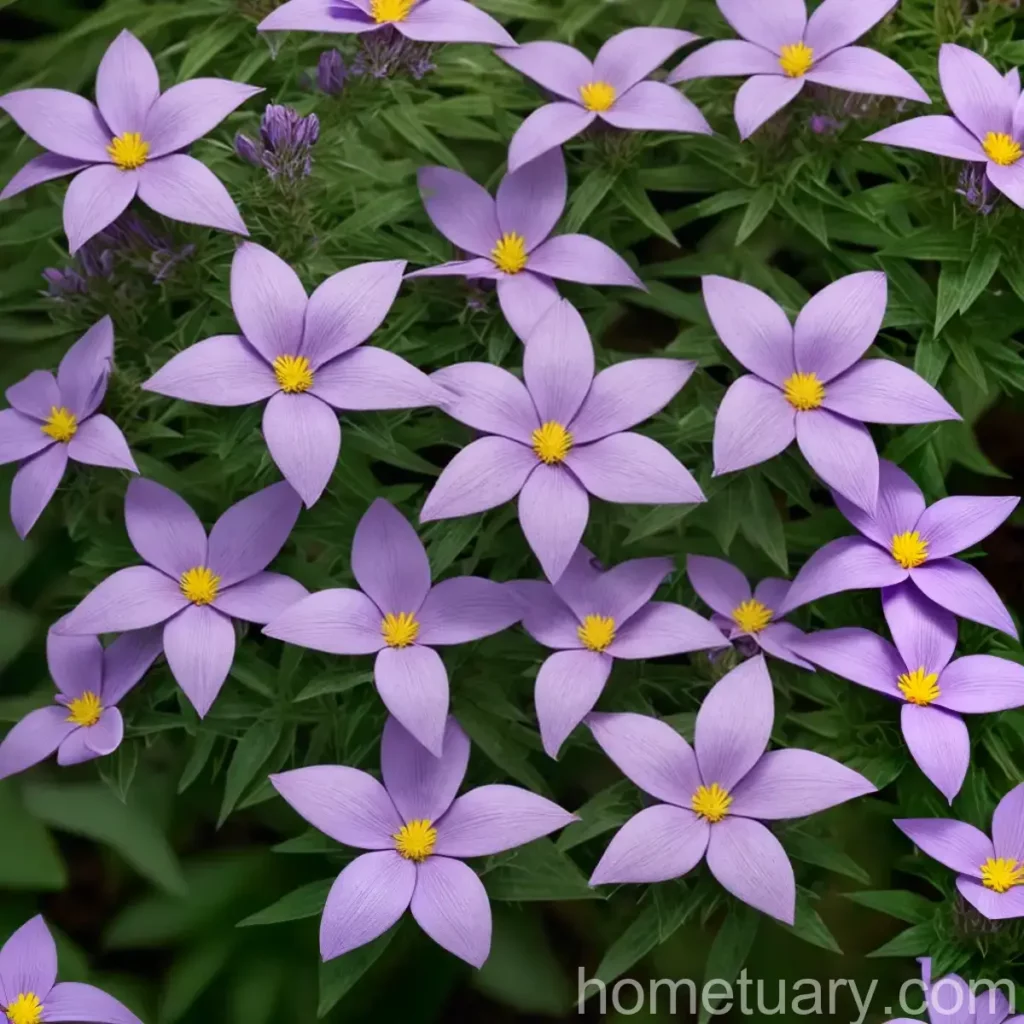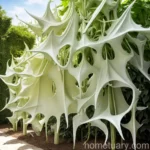Cupflower (Nierembergia scoparia ‘Purple Robe’)
Plants have the incredible ability to bring beauty and life to any garden. They come in a myriad of shapes, colors, and sizes, each with its own unique characteristics and care requirements. One such plant that deserves attention is the cupflower (Nierembergia scoparia ‘Purple Robe’). In this comprehensive guide, we will delve into the various aspects of this delightful plant, including its culture, uses, care requirements, and more.
What is cupflower (Nierembergia scoparia ‘Purple Robe’)?
Cupflower, scientifically known as Nierembergia scoparia ‘Purple Robe’, is an enchanting perennial plant that is revered for its delicate, cup-shaped, lavender-blue flowers. It belongs to the family Solanaceae and is native to South America. The ‘Purple Robe’ cultivar, in particular, is celebrated for its profusion of flowers that adorn the plant throughout the growing season, making it a popular choice among gardeners and landscapers alike.
Key Takeaways – Cupflower (Nierembergia scoparia ‘Purple Robe’)
Before we delve into the specifics of the cupflower, let’s summarize the key takeaways that we will be exploring in this article.
- Plant Name: Cupflower (Nierembergia scoparia ‘Purple Robe’)
- Culture
- Uses
- Water
- Sunlight
- Fertilizer
- Soil
- Pruning
- Propagation
- Container Popularity
- Common Diseases
- Common Pests
- Botanist’s Tips
- Fun Facts
- Links to External Resources
Now, let’s explore each of these aspects in detail.
Culture
The culture of cupflower encompasses various factors such as its growth habits, maintenance, and landscape uses.
Growth Habits
Cupflower is known for its low, spreading growth habit, making it an ideal choice for groundcover or as a border plant. The ‘Purple Robe’ cultivar, in particular, has a compact and mounding form, creating a visually appealing display in the garden.
Maintenance
This plant is relatively low-maintenance, requiring moderate attention to thrive. Its maintenance primarily involves regular watering, occasional fertilization, and prudent pruning to promote a bushy and healthy growth.
Landscape Uses
Due to its spreading nature and enchanting flowers, cupflower is often used as a groundcover or to adorn garden borders. Its versatility also extends to container gardening, where it can be showcased in pots and planters, adding charm to patios and balconies.
Uses
Cupflower serves various practical and aesthetic purposes in the garden and beyond.
Aesthetic Uses
The primary use of cupflower lies in its ornamental value. Whether used to add a splash of color to garden beds, fill in gaps in landscaping, or elevate the visual appeal of containers, its charming flowers contribute to a captivating garden display.
Pollinator Friendly
Beyond its aesthetic uses, cupflower also attracts pollinators such as bees and butterflies, making it an excellent addition to wildlife-friendly gardens and landscapes.
Water
The water requirements of cupflower are crucial to its overall health and vitality.
Watering Needs
This plant thrives in well-draining soil and appreciates regular watering, especially during its active growth periods. It is essential to keep the soil consistently moist but not waterlogged to prevent issues such as root rot.
Sunlight
Sunlight plays a pivotal role in determining the growth and blooming potential of cupflower.
Sunlight Requirements
Cupflower flourishes in full sun to partial shade, making it adaptable to various light conditions. However, to encourage prolific flowering and robust growth, providing it with at least 6 hours of direct sunlight is ideal.
Fertilizer
Appropriate fertilization contributes to the overall vigor and flowering prowess of cupflower.
Fertilizer Application
During the growing season, applying a balanced, all-purpose fertilizer every 6 to 8 weeks can bolster the plant’s growth and enhance its floral display. It is imperative to follow the recommended application rates to avoid fertilizer burn.
Soil
The soil composition greatly influences the health and performance of cupflower.
Soil Preferences
Cupflower thrives in well-draining, loamy soil with a slightly acidic to neutral pH. Amending the soil with organic matter, such as compost, can improve its structure and fertility, providing an optimal growing medium for the plant.
Pruning
Pruning is an integral aspect of cupflower care, contributing to its overall shape, health, and blooming potential.
Pruning Guidelines
Regular deadheading, the removal of spent flowers, encourages continuous blooming and prevents the plant from diverting its energy into seed production. Additionally, light pruning after each blooming cycle can help maintain a tidy and compact form.
Propagation
Understanding the propagation methods of cupflower enables gardeners to expand their plant collection and share its beauty with others.
Propagation Techniques
Cupflower can be propagated through division or stem cuttings. Dividing mature clumps in early spring or taking softwood cuttings in late spring can yield new plants, allowing gardeners to propagate and grow them in different areas of the garden.
Container Popularity
Cupflower’s versatility makes it a popular choice for container gardening, adding a touch of elegance and color to outdoor spaces.
Container Gardening
When grown in containers, cupflower brings its enchanting blooms to patios, balconies, and other outdoor settings, enhancing the visual appeal of these spaces. Selecting well-draining containers and providing adequate care can ensure the plant thrives in its container environment.
Common Diseases
While cupflower is relatively disease-resistant, it is essential to be aware of potential issues and their management.
Disease Resistance
Cupflower exhibits good resistance to most common plant diseases. However, overwatering and poor air circulation can lead to issues such as powdery mildew and root rot. Maintaining proper cultural practices and promptly addressing any signs of disease can help protect the plant’s health.
Disease Diagnosis
Diagnosing and treating plant diseases promptly is crucial to preventing their escalation and safeguarding the overall well-being of cupflower.
Common Pests
Cupflower is generally resistant to pests, but occasional infestations may occur, necessitating vigilance and appropriate management.
Pest Control
Common pests that may affect cupflower include aphids and spider mites. Regular monitoring, cultural practices, and, if necessary, the application of insecticidal soap or horticultural oil can help control these pests and protect the plant.
Botanist’s Tips
Honing in on expert tips and insights can elevate the cultivation and care of cupflower.
Expert Recommendations
- Plant cupflower in well-draining soil to prevent waterlogging, promoting robust growth.
- Deadhead spent flowers regularly to encourage continuous blooming and maintain a neat appearance.
- Provide adequate sunlight for the plant to thrive and produce an abundance of flowers.
Fun Facts
Discovering intriguing and captivating facts about cupflower adds a layer of fascination to its cultivation and presence in the garden.
Did You Know?
- Cupflower is named for its charming cup-shaped flowers that adorn the plant.
- The ‘Purple Robe’ cultivar showcases an alluring display of lavender-blue flowers that captivate onlookers.
Links to External Resources
For additional information and insights on cupflower and its cultivation, the following external resources offer valuable knowledge and guidance:
- Royal Horticultural Society
- Missouri Botanical Garden
- University of Florida IFAS Extension
- Gardening Know How
- The Spruce
By exploring these external resources, enthusiasts and horticulturists can gain a comprehensive understanding of cupflower and refine their approach to its cultivation and care.
As we conclude our exploration of the captivating cupflower (Nierembergia scoparia ‘Purple Robe’), it is evident that this charming plant offers much to admire and appreciate. Its alluring flowers, low-maintenance nature, and versatility in various garden settings make it a valuable addition to any landscape. Embracing its cultivation and care requirements, along with leveraging expert insights, ensures a thriving and visually captivating display of cupflower in the garden.















